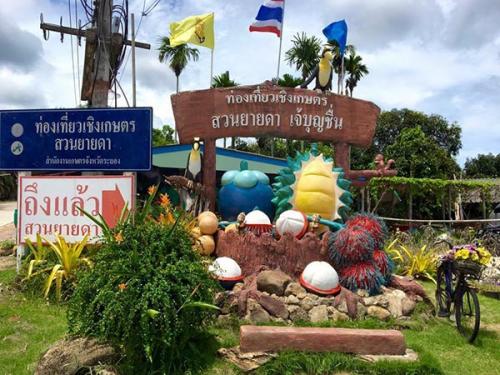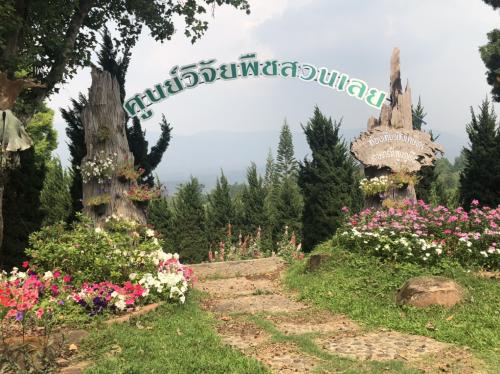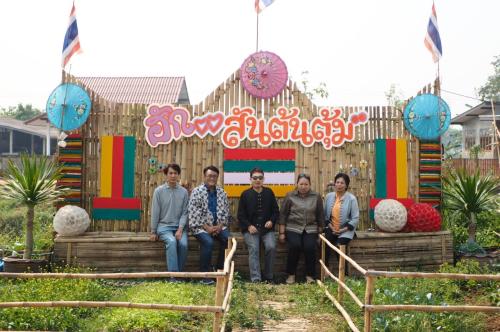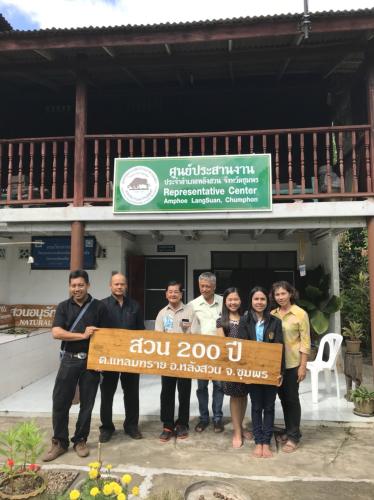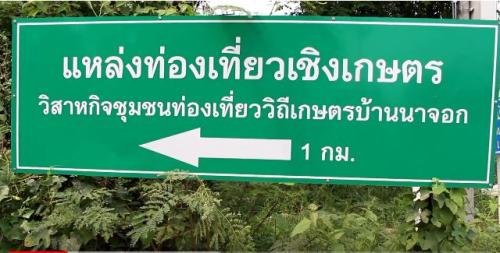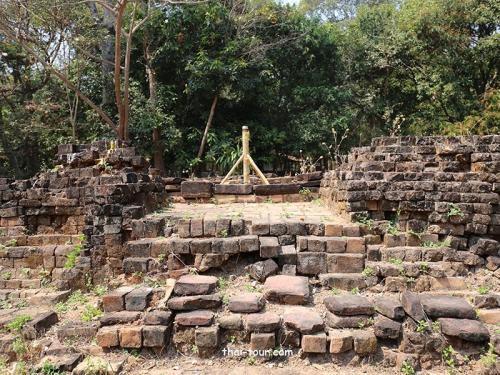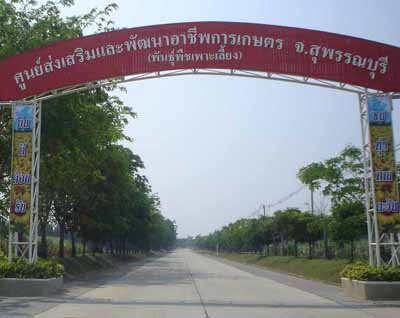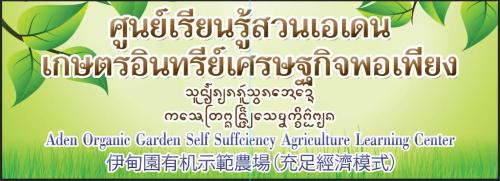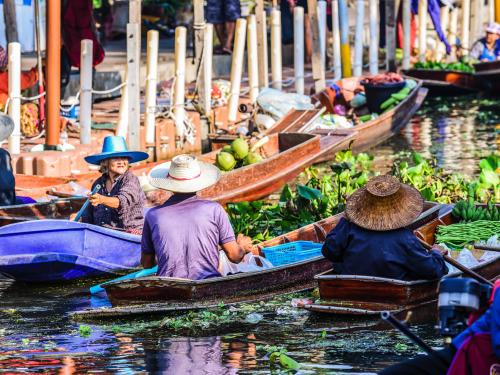Weather
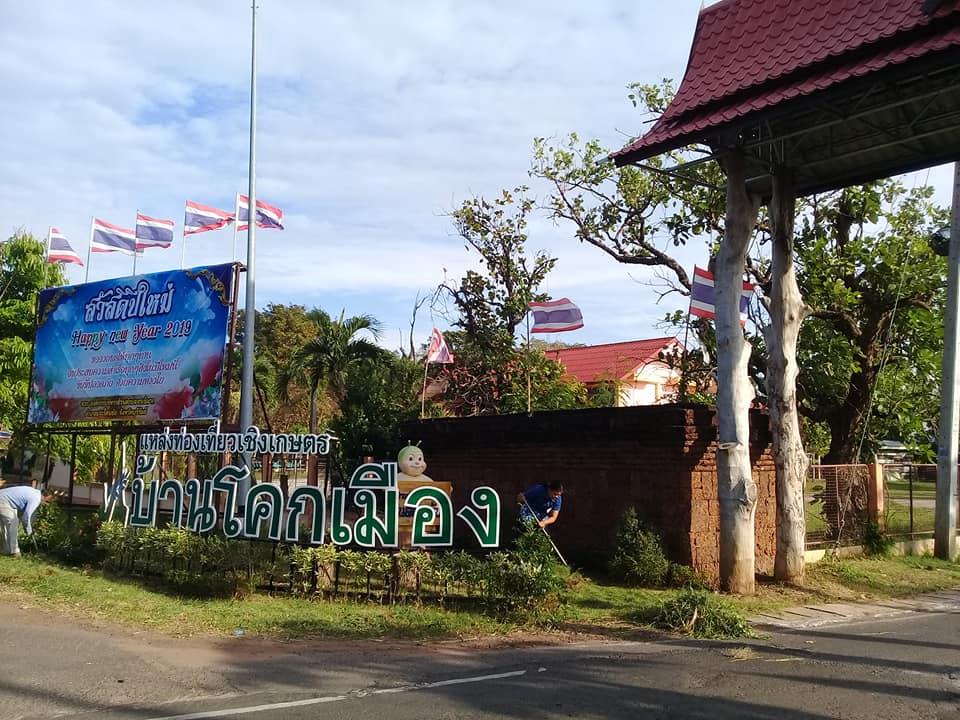
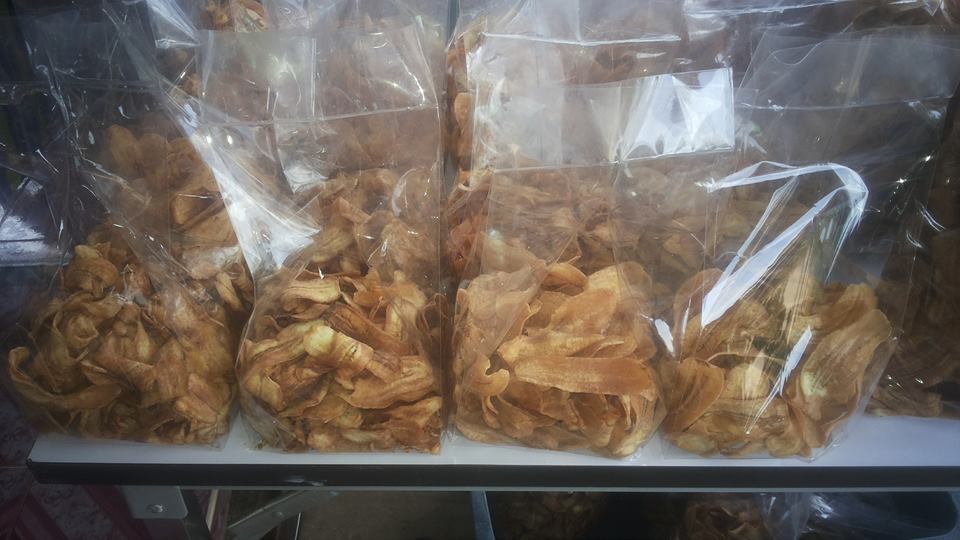

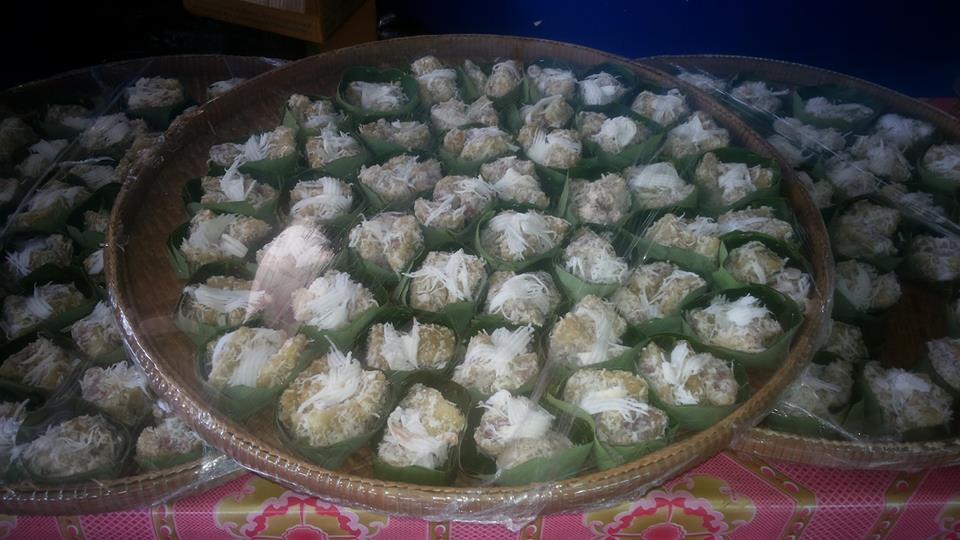
Closed
Business hours
• Sunday
: 09:00 - 16:00
• Monday
: 09:00 - 16:00
• Tuesday
: 09:00 - 16:00
• Wednesday
: 09:00 - 16:00
• Thursday
: 09:00 - 16:00
• Friday
: 09:00 - 16:00
• Saturday
: 09:00 - 16:00
Note
: -
Map
Review Score
0
Information
1. Form of activity: see and study the production process of jasmine rice, volcanic soil, weave mat demonstrate, fabric dyeing from soil at Ba Rai holy well. Sightseeing plant herb production area and herbal processing, buy some souvenir or product and agricultural goods, OTOP center. You can try yummy food in KhanToke style and see Apsara Dance, see view by bicycle, take a rest at homestay, visit rural market in the morning.
2. The way of community: cultivation, southern east livelihood, traces of Khmer civilization.
3. The Participation of tourist: tour, taste, shopping, snap, share, do and learn agricultural station.
Tourism Program
2 days 1 night
Frst day, Check in at the accommodation, rent some bicycle, see how to produce volcanic jasmine rice station, see how to plant vegetable and herbal processing, having lunch at Baray reservoir. Afterwards, visiting at Mueang Tum Ruin, see around the community by bicycle in the evening then make some traditional dinner at homestay (KhanToke style and see Apsara dance but it is depend on coustomer's demand because it is an extra charge), lie down at homestay.
Day 2 Visit morning rural market, give food to the monks, have a meal at homestay, weave mat demonstrate and fabric dyeing from soil at Ba Rai holy well, weave fabric as Paco Fern pattern (Pak Krood) and buy some silk fabric with Pak Krood pattern at The OTOP center, go up the hill to visit Khao Phanom Rung National Park
The route that linking with the others tourist attraction
1. Mueang Tum Ruin distance 500 meters.
2. PhanomRung Historical Park distance 5 kilometers.
3. Phu Akkanee Dye Fabric group distance 23 kilometers.
4. Wat Khao Ang-Karn Chaloem Phra Kiat district distance 25 kilometers
2. The way of community: cultivation, southern east livelihood, traces of Khmer civilization.
3. The Participation of tourist: tour, taste, shopping, snap, share, do and learn agricultural station.
Tourism Program
2 days 1 night
Frst day, Check in at the accommodation, rent some bicycle, see how to produce volcanic jasmine rice station, see how to plant vegetable and herbal processing, having lunch at Baray reservoir. Afterwards, visiting at Mueang Tum Ruin, see around the community by bicycle in the evening then make some traditional dinner at homestay (KhanToke style and see Apsara dance but it is depend on coustomer's demand because it is an extra charge), lie down at homestay.
Day 2 Visit morning rural market, give food to the monks, have a meal at homestay, weave mat demonstrate and fabric dyeing from soil at Ba Rai holy well, weave fabric as Paco Fern pattern (Pak Krood) and buy some silk fabric with Pak Krood pattern at The OTOP center, go up the hill to visit Khao Phanom Rung National Park
The route that linking with the others tourist attraction
1. Mueang Tum Ruin distance 500 meters.
2. PhanomRung Historical Park distance 5 kilometers.
3. Phu Akkanee Dye Fabric group distance 23 kilometers.
4. Wat Khao Ang-Karn Chaloem Phra Kiat district distance 25 kilometers
Source
Thailand Tourism Directory
Recommended
Entrance fees
• Entrance fees: Non-fee
• Remark : -
Review (0)
Write Review
0
จาก 5.0
Availability
Value
Service
Relate Agritourism
Yai Da Garden - Jay Boonchuen is a mixed fruit orchard. There are touring activities in garden buffet which is collecting the entrance fee to the garden, the price is 200 baht per person, you can eat and sleep all day with papaya salad buffet. There is a tour group service, dining in the garden. There are fried durian products and durian durian from Yai Da garden. It can be made by yourself like Secret recipe, crispy, delicious, with real Rayong shrimp paste. traditional do-it-yourself and selling fresh fruit
Tourism program
- December - January Come see the durian flowers bloom and see how to pollinate durian, rambutan and salak
- February - March is the season of sweet maprang and mayongchit (Sweet yellow Marian plum)
- April - June is the time when the fruits are most ready. Fruit buffet activity
Route links to other attractions (with distance/km)
- Mae Ramphueng Beach 8 km., Suan Son Beach 15 km., Rayong Aquarium 13 km., Taphong Fruit Market 6 km., Pier to Koh Samet 12 km.
Community Enterprise product
Processed agriculture product, fried durian, good quality shrimp paste and fruits.
Rayong
In the past, the Phu Ruea High Altitude Agricultural Experiment Station was to test the winter fruit varieties for planting in the northeastern highlands, including apple cultivars. and peach varieties for eating fresh In addition, Phu Ruea High Land Agricultural Experiment Station has also made efforts to collect and study grape varieties for making wine, including grapes for eating fresh, to develop varieties and encourage farmers in Loei Province to continue planting.
Loei
A village that grow organic vegetables. Visitors can come and learn how to compost from garbage, making compost from oyster snails, and cultivation of organic vegetables from the royal family of Chakphan Pensiri.
Able to visit every day.
Tel 08199896279
Phayao
It is an area that connects to Khao Yai National Park; thus, this area has an abundance of nature. And, the villagers here make seasonal orchards, and it is suitable for natural tourism .There is also a tree dug around, selling various seedlings and a camping ground
Saraburi
The ancient 200-year-old garden utilizes the resources for the long-term highest benefits. It is located at No. 5 Moo 11, Laem Sai Sub-district, Lang Suan District, Chumphon Province, about 2 kilometers from Lung Suan Market. Samroeng Rajavate, the fourth generation of the family, is a current caretaker. This is the mixed garden, where various fruits are grown in the same area. Whether Local Durian, Mangosteen, Local Rambutan, Langsat, Betel Nut, Coconut, Nutmeg, Sato, Lukniang, Sapodilla, Champa, Jackfruit, Mafai, Banana, Homegrown Vegetables, and Herbs. Without the use of chemical fertilizers to accelerate growth. The soil is treated by growing the grass to nourish the soil moisture throughout the year. Natural fertilizer is used, such as dead leaves and annual crop residues. For pest control, birds, squirrels, and tree shrews are eating worms and insects as food. The cost includes the labor cost during harvesting season to cut grass to facilitate the harvest and at the area to plant the trees that will be repaired.
Chumphon
The Ministry of Agriculture and Cooperatives established the Golden Jubilee Museum of Agriculture on the occasion of His Majesty King Bhumibol Adulyadej's 50-year to the throne in 1996. On the area of 800,000 square meters in Klong Nueng Subdistrict, Klong Luang District, Pathumthani Province.
Pathum Thani
1. Methods of organizing activities - Guided tours, cooking and eating Vietnamese food, Wearing Ao Yai (Vietnamese costume), and homestay
2. Community’s way of life - safe vegetable growing local cooking sip local tea
3. Tourist participation – visit vegetable plots Vietnamese food, cycling
Tour Program
Taste local tea, collect vegetables, Vietnamese cooking, Wearing Ao Yai, cycling to see the cultural lifestyle of Thai people of Vietnamese descent, and stay in a homestay
Route links to other attractions (with distance/km)
- Freshwater Fish Museum, a distance of 2 km.
- Chaloem Phrakiat Chakri Dynasty Hall, a distance of 2.5 km.
- Landmark, Phaya Si Sattanakharat, a distance of 5 km.
- The 3rd Thai-Lao Friendship Bridge, a distance of 15 km.
Community enterprise products in the community
Vegetables are safe from toxins, fruit, dried/fresh tea leaves, hammocks, hemp leaf snacks.
Nakhon Phanom
Dong Muang Toei is the old city of the Khmer period. No one knows when it has been an abandoned city for how long. The condition seen from many generations of great-grandparents; Dong Muang Toei has high forests with transparent in the bottom ground. There were some small trees and the big trees are rubber trees, tabaek trees, and Yang Hiang trees. It is a very dense forest. The parents and grandparents did not dare to cut down the trees in this grove because Dong Muang Toei has a fierce ghost called the Ghost of Grandfather. The forest is the habitat of monkeys and many birds. The marsh around Dong Muang Toei is a deep swamp with water all year round. It is a habitat and a natural breeding ground for fish. In addition to birds and this swamp is known to have the most turtles. The reason there are so many turtles, the villagers worship the spirits of their grandfathers. Grandfather forbids anyone to eat and destroy his animals, monkeys and turtles, and if they cause harm, they shall be punished accordingly.
Later, about 90 years ago, Song Puei villagers had a shaman who studied sorcery to perform a ceremony to defeat the ghosts of Muang Toei. This sorcerer's name is Elder Suwo. This incident coincides with the reign of Father Yai Agrahad. It was the eyes of the light when villagers near and far heard the news that Father Yai Suwo had defeated the Phi Dong Muang Toei. They flocked to catch fish turtles from Muang Toei for food until they almost cleared the swamp. So turtles are almost extinct until now. Father Yai Suwo has shared the swamp as a land for brothers and sisters to cultivate until today. As for Dong Muang Toei, the area has been divided into farming, gardening, and growing crops as much as today. This is true Elderly people who have reached 90 years of age, such as Father Yai, light scent, Father Big Bu Kokpuei, are still alive as witnesses.
Yasothon
Suan Sawan Suphan Buri on the area of hundreds of acres: It consists of many types of plants that are displayed for viewing each period and various festivals throughout the year, including Thai flowers and oversea flowers that are colorful, beautiful and spectacular. Both foliage and fruit trees that have been researched and propagated until obtaining suitable varieties with the best quality for distribution to farmers for further cultivation
Suphan Buri
1. It is a learning center for the Garden of Eden, organic agriculture, sufficiency economy.
2. Making biogas for household use
3. Making organic fertilizer and making bio-fermented water
4. Using water buffalo to plow into a traditional way of life
5. Damping and restoring forests for water sources (forest planting)
6. Making pork pits, buffalo pits, chickens, etc.
7. Growing organic vegetables and organic fruits (mixture)
8. Fisheries
Chiang Rai
See, taste, shop, community products at Tha Kha Floating Market. (The floating market is held every Saturday. Sunday and public holidays and every day of the 2nd waning, 7th waning and 12th waning days)
- Take a paddle boat to see the nature along the canal Along the route of His Majesty King Rama V at Ban Kamnan Chan, an old Thai house. (Book before visiting Ban Kamnan Chan)
-Visit community activities Participate in activities based on various learning bases of the farm housewives group. Tha Kha Floating Market from the story of the coconut See the wisdom of making coconut sugar, including
- Harvesting coconut sugar from the tree
- Traditional way of simmering coconut sugar
- Add sweetness, learn how to make traditional sweets from Tha Kha coconut sugar
- Weaving coconut stalks Traditional wisdom of Tha Kha people
- Weaving with fresh coconut Weave them into hats, baskets, etc.
- Dukdik boat from coconut husks
Samut Songkhram
It is an agritourism attraction that is still natural and pure. It is also warm with the beautiful way of life of the hill tribes. During September to October is the rice farming season which is suitable period to visit.
Mae Hong Son

